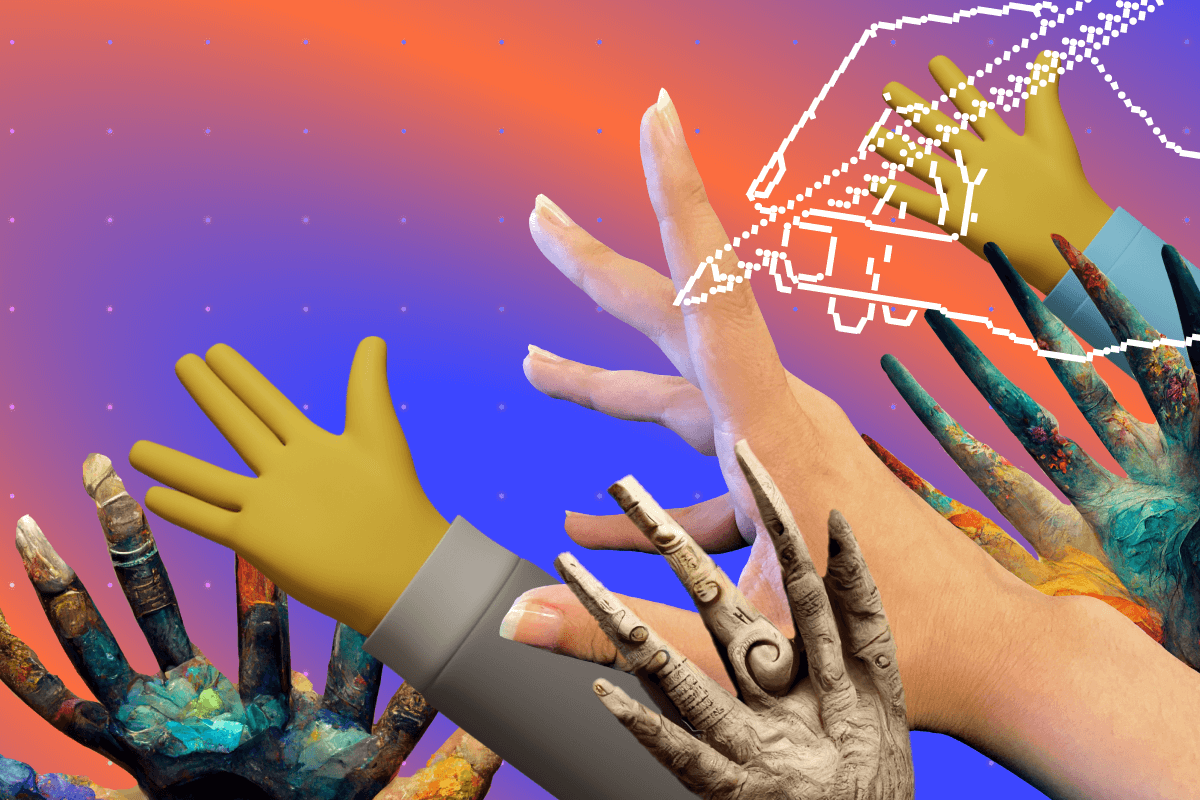Op-Ed: Beware a world where artists are replaced by robots. It’s starting now

- Share via
Like many artists, I’ve looked in horror at generative image AI, a technology that is poised to eliminate humans from the field of illustration.
In minutes or hours, apps such as Stable Diffusion and Midjourney can churn out polished, detailed images based on text prompts — and they do it for a few dollars or for free. They are faster and cheaper than any human can be, and while their images still have problems — a certain soullessness, perhaps, an excess of fingers, tumors that sprout from ears — they are already good enough to have been used for the book covers and editorial illustration gigs that are many illustrators’ bread and butter.
They are improving at an astounding rate. Though some AI fans give lip service to the idea that this technology is meant to help artists, it is, in fact, a replacement, as explicit as the self-acting spinning mule, a machine commissioned by British factory bosses in 1825 to break the power of striking textile workers.
This replacement could only be accomplished through a massive theft. The most popular generative art AI companies, Stability AI, Lensa AI, Midjourney and DALL-E, all trained their AI’s on massive data sets such as LAION-5B, which is run by the German nonprofit LAION.
These data sets were not ethically obtained. LAION sucked up 5.8 billion images from around the internet, from art sites such as DeviantArt, and even from private medical records. I found my art and photos of my face on their databases. They took it all without the creator’s knowledge, compensation or consent.
Once LAION had scraped up all this work, it handed it over to for-profit companies — such as Stability AI, the creator of the Stable Diffusion model — which then trained their AIs on artists’ pirated work. Type in a text prompt, like “Spongebob Squarepants drawn by Shepard Fairey,” and the AI mashes together art painstakingly created over lifetimes, then spits out an image, sometimes even mimicking an artist’s signature.
AIs can spit out work in the style of any artist they were trained on — eliminating the need for anyone to hire that artist again. People sometimes say “AI art looks like an artist made it.” This is because it vampirized the work of artists and could not function without it.
John Henry might have beaten the steam drill, but no human illustrator can work fast enough or cheap enough to compete with their robot replacements. A tiny elite will remain in business, and its work will serve as a status symbol. Everyone else will be gone. “You’ll have to adapt,” AI boosters say, but AI leaves no room for an artist as either a world creator or a craftsman. The only task left is the dull, low-paid and replaceable work of taking weird protrusions off AI-generated noses.
While they destroy illustrators’ careers, AI companies are making fortunes. Stability AI, founded by hedge fund manager Emad Mostaque, is valued at $1 billion, and raised an additional $101 million of venture capital in October. Lensa generated $8 million in December alone. Generative AI is another upward transfer of wealth, from working artists to Silicon Valley billionaires.
All this has made illustrators furious. After ArtStation, the popular portfolio site for the entertainment and game design industry, decided to allow AI-generated art, the front page became a sea of anti-AI graphics, uploaded by artists in a coordinated rebellion. ClipStudioPaint pulled a generative AI feature after protests by its users. Artists such as “Hellboy” creator Mike Mignola have spoken out against AI art. Famed animator Hayao Miyazaki called it an “insult to life itself.”
AI pushers have told me that AI is a tool which artists can use to automate their work. This just shows how little they understand us. Art is not scrubbing toilets. It’s not an unpleasant task most people would rather have the robots do. It is our heart. We want to do art’s work. We make art because it is who we are, and through immense effort, some of us have managed to earn a living by it. It’s precarious, sure. Our wages have not risen for decades. But we love this work too much to palm it off to some robot, and it is this love that AI pushers will never get.
They already seem omnipresent, but generative art AIs are at their beginning. If illustrators want to stay illustrators, the time to fight is now. Data sets such as LAION-5B must be deleted and rebuilt to consist only of voluntarily submitted work. AIs trained on copyrighted art must also be pulled. Above all, the work of real people should be valued, not exploited to enrich a few tech plutocrats. We are, after all, on “team human.”
Molly Crabapple is an artist and author of “Drawing Blood.”
More to Read
A cure for the common opinion
Get thought-provoking perspectives with our weekly newsletter.
You may occasionally receive promotional content from the Los Angeles Times.









